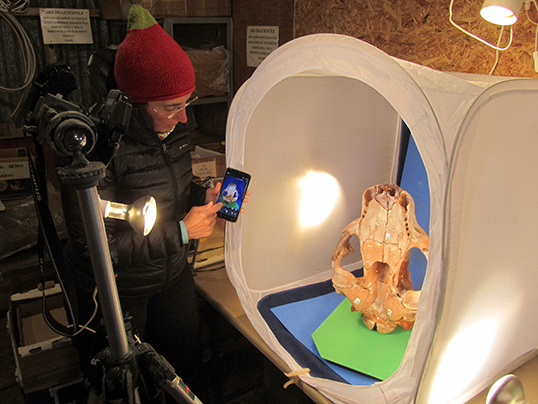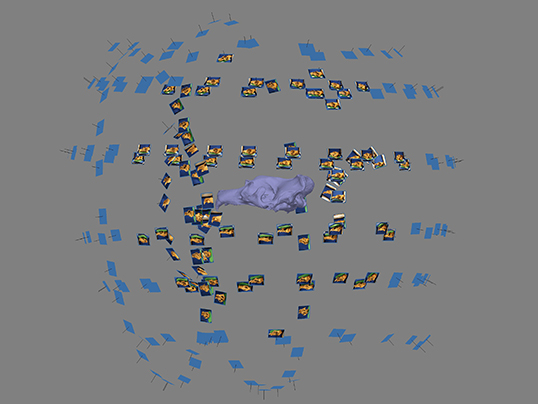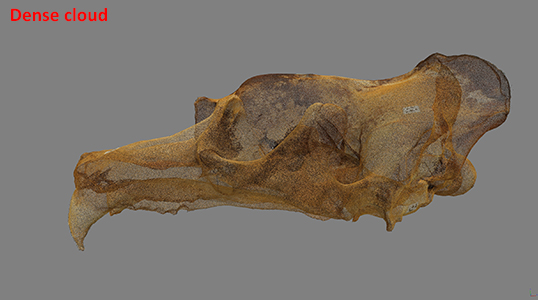Skulls: workflow
Getting to a good, measurable, 3D model of a skull is a rather long process. We need first to get the skull. All skulls of our collection belong to seals that died on Sea Lion Island beaches, most of them because they were killed by orcas. As soon as we find a dead seal we try to remove the skull, and that can be a rather difficult job for large seals.Then, it takes quite a lot of time to get a cleaned up skull. For that, we use a rough manual clean up, followed by maceration and immersion in low concentration peroxide.
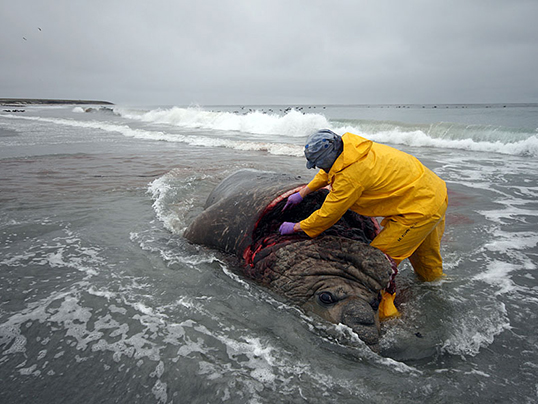
The removal of the skull of Aike, an adult elephant seal male killed by the orcas at Sea Lion Island
To create our 3D models, we take pictures of the skull with a consumer grade digital camera (Olympus E-M10). We use a light box to optimize lighting and a turntable to rotate the skull, and we control the camera from a smartphone to reduce shot vibrations.
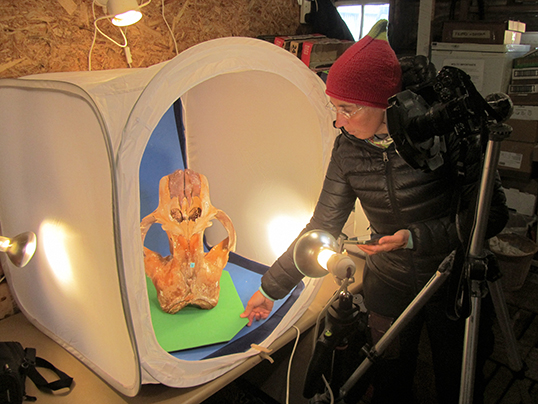
The photographic set up in the old wool shed of Sea Lion Island
Controlling the camera by a wireless link to a smartphone
Photos are processed in Agisoft Metashape. Models are then maniopulated in the open-source software MeshLab and Blender.The final model, that is properly scales using actual measurement of some parts of the skull, is then used to make measurement and place landmarks for morphometric studies.
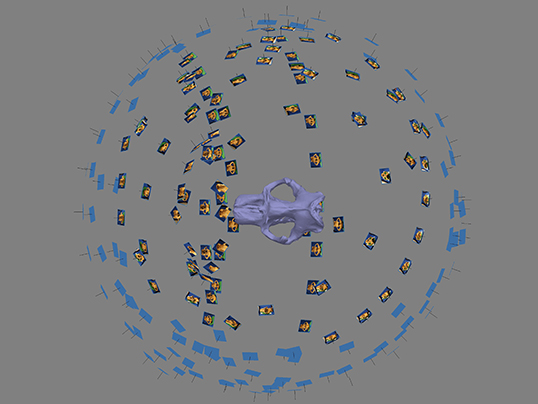
A visualization of the pictures taken to create a 3D model of an elephant seal mandible; various series of pictures are taken, with different angle of view, each one including a full rotation of the object
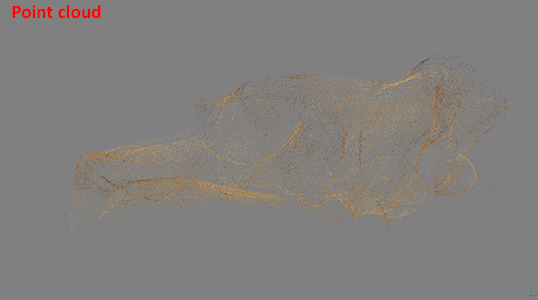
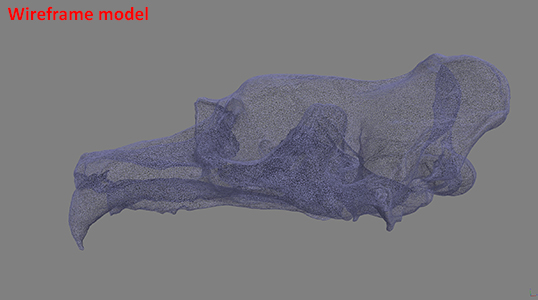
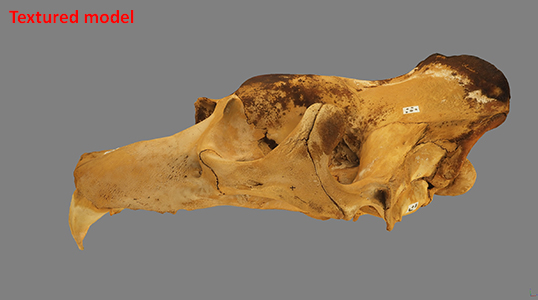
The sequence of steps carried out in Agisoft Metashape to obtain the final 3D model, from the point clound to the textured model.
Our 3D models are hosted online on Sketchfab.
For more information please contact us by email at fil_esrg@eleseal.org. Thank you for your interest in our research projects !

